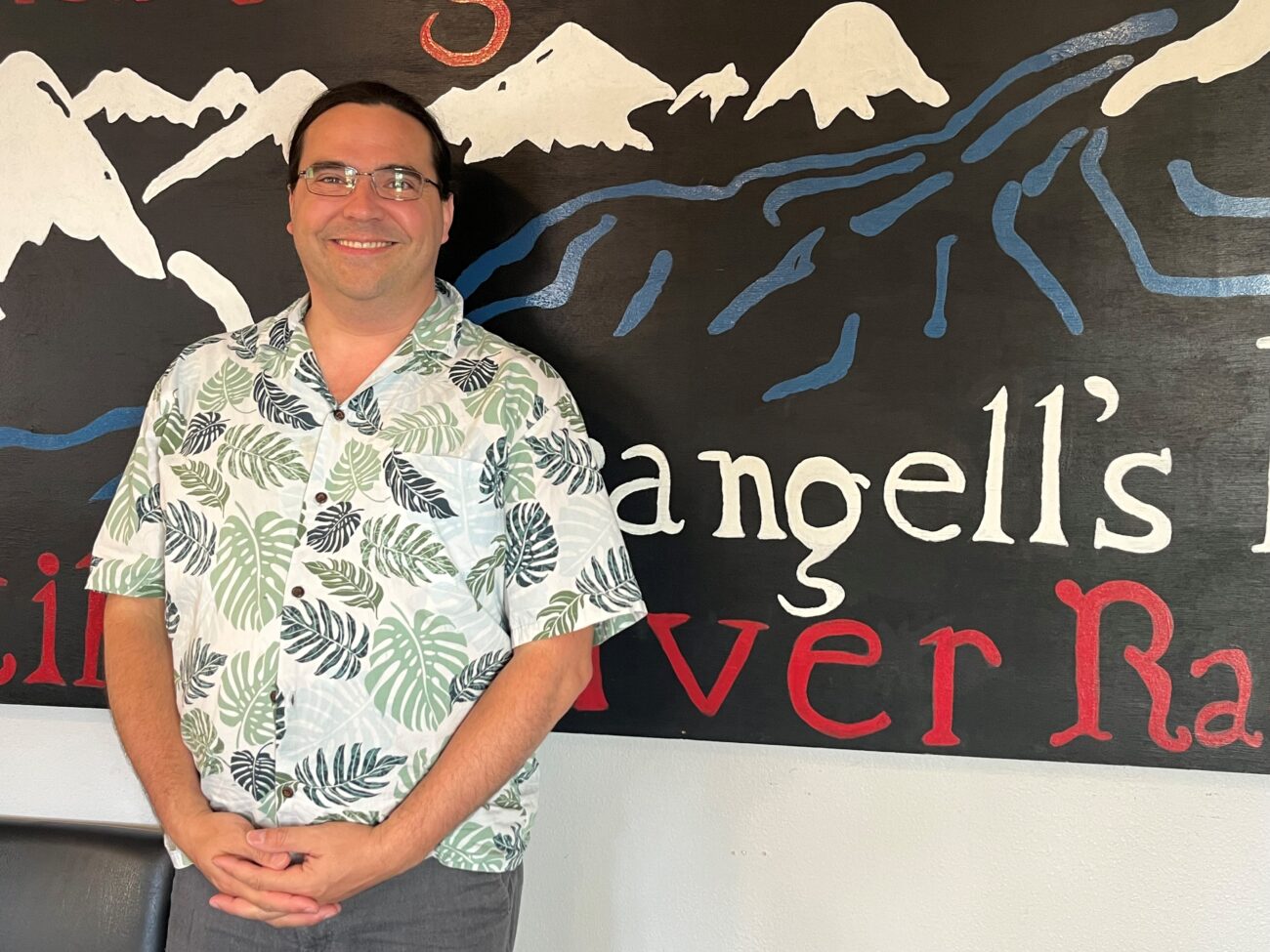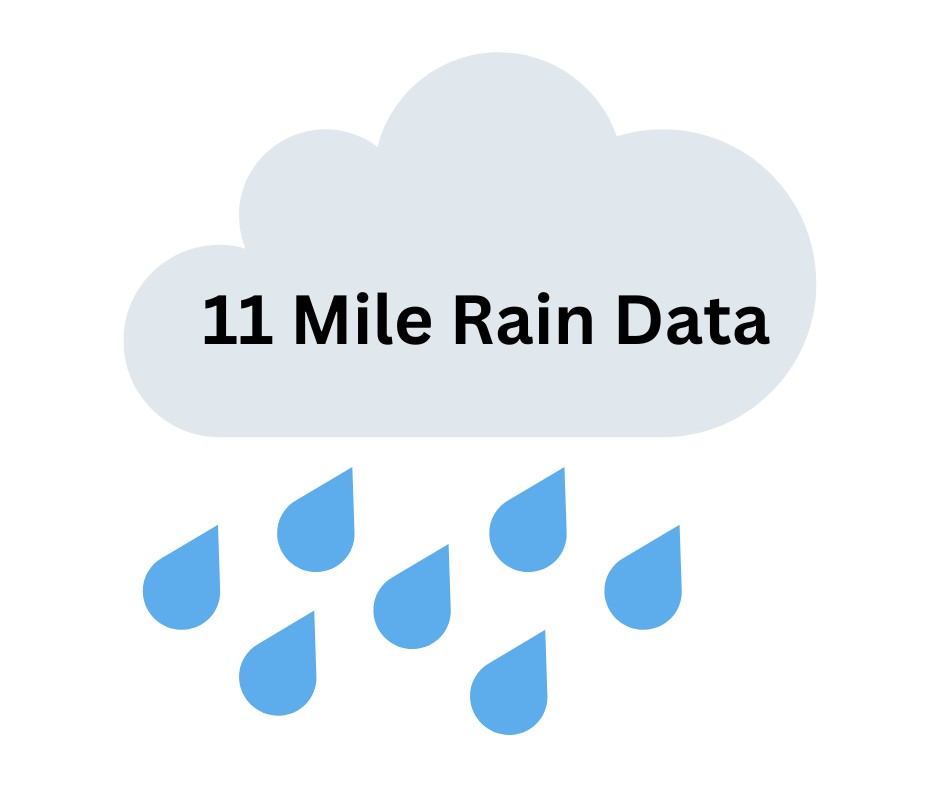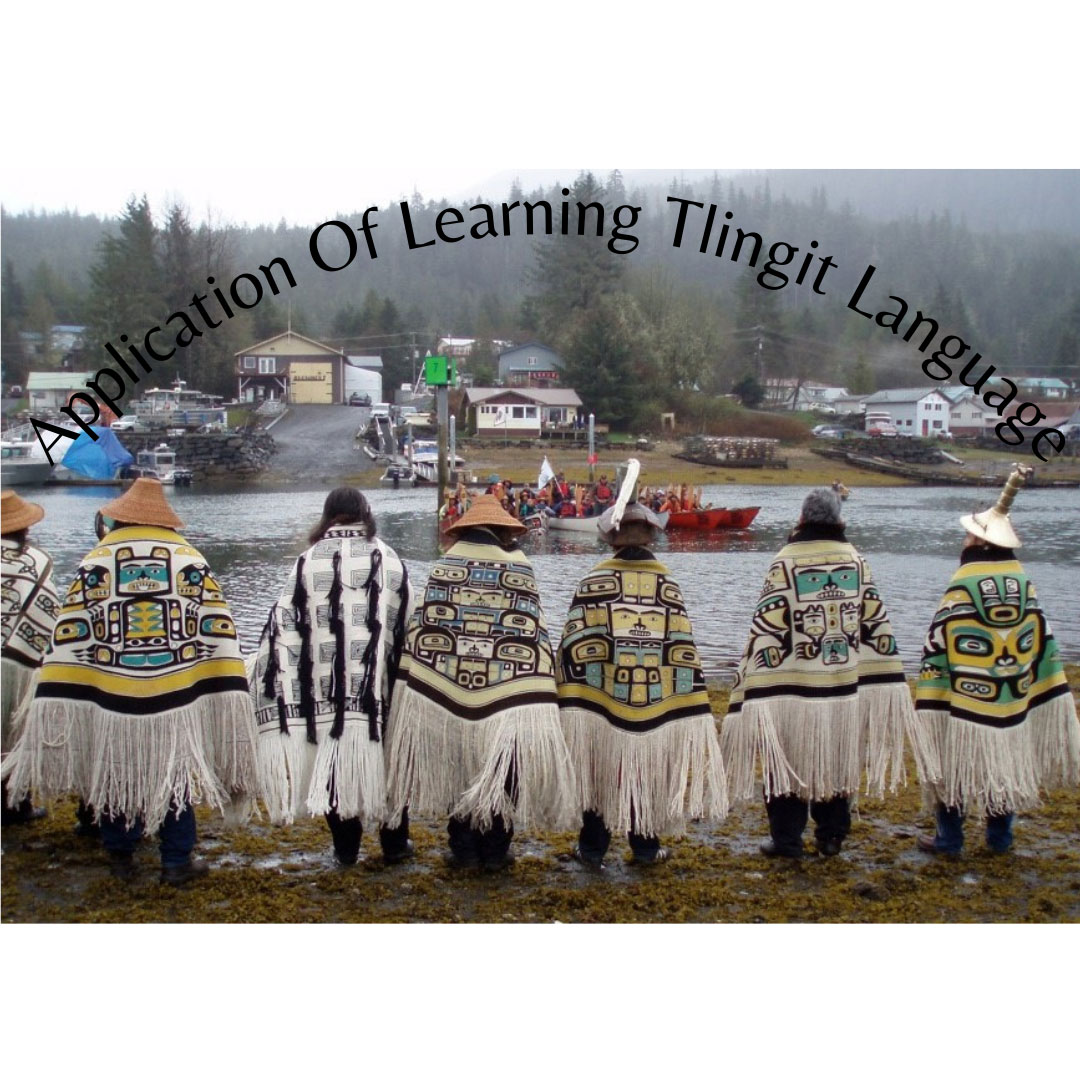
James Crippen is a Tlingit linguist who’s trying to document the language before it becomes extinct. He spoke with KSTK’s Colette Czarnecki last summer on why devoting his work to the Tlingit language for the past 20 years is essential for him.
The author lightly edited the interviews for brevity and clarity.
Lingít x̱ʼéináx̱ Dzéiwsh yóo x̱at duwasáakw, ḵa Dleit Ḵáa x̱ʼéináx̱, Hínginan x̱ʼéináx̱ James Crippen yóo x̱at duwasáakw.
I’m called Dzéiwsh in Tlingit. I’m called James Crippen in English. I’m a professor at McGill University in Montreal in Canada, professor of linguistics.
Human language seems to be a unique phenomenon. There’s no other animals that have a communication system like we do. Many animals know all sorts of ways to communicate, but they don’t have the sorts of parts and pieces that can be put together in extremely complex ways to say completely new things. And so from a linguistic science perspective, we’re trying to figure out, ‘what are those things in common, and why are they in common?’.
So we look at lots and lots of different languages. We do intensive study and analysis of particular languages.
And then a particularly crucial issue for linguists is that many, many languages around the world are critically endangered. They’re disappearing. obviously, Tlingit is one of them. It’s in tough shape. It’s my heritage, so I’m doing research on it. Have been for the last 15, 20 years, trying to study and document the language people can use to learn from.
Tlingit evolved in a particular way. And we’re trying to see, like, ‘how does it work that way? What are the parts and pieces that are going on inside of it?’ And crucially, this is the sort of thing you cannot do with books or recordings. I can’t ask a recording of somebody who passed away whether there’s an alternate form that they didn’t say, right? I can’t get anything from those recordings that people don’t do. We’re interested in those questions. ‘What can’t you do in your language?’ Because that defines the boundaries of your language, and that information can only come from living people.
How many fluent Tlingit speakers are there in the world?
The situation now is really, really dire. There’s no easy way to put it. There’s certainly less than 100 people alive who are fluent speakers of the language from birth. I would say just a rough guess, there’s probably only about 10 who are able and willing to work with linguists.
And they’re all in their 70s and 80s, except for maybe one or two who are in their 60s. It’s not fun to say, but the truth is, within another decade, we’re probably going to have no birth Tlingit speakers around for us to work with and document more language.
The only places it’s spoken are here in Southeast Alaska and in the Yukon.
Would you say with the different regions, it’s a different dialog?
Absolutely. So there’s more or less three major dialects of the language. The one everybody has heard in general, the one that everybody’s learning nowadays, is the northern dialect and that’s spoken effectively from here north. There are two others: there’s Southern Tlingit and then there was a third dialect, which was spoken in the Tongass area around Taantʼa Ḵwáan that goes all the way down to the Canadian border. It’s known as Tongass Tlingit, and it’s really its own dialect. It has a whole bunch of things that are quite radically different from the other Tlingit dialects. It’s still understandable, though, a Tongass speaker could speak to somebody in Juneau, and they’d basically be able to understand each other.
Would it be the sounds of how people pronounce that are different, and maybe also the grammar?
A lot of it is the sounds. There’s some quite subtle differences between them that people would pick up on, like how the high tone versus low tone is produced. It’s definitely a character that people would pay attention to. Some of the vowels shift a little bit. But then there’s also a few things, like the names for times of the year, like months and so forth, that might be a little different from place to place.
For people who want to learn, where and how can they learn?
There’s a huge amount of material that X̱ʼunei Lance Twitchell has put on the web, and it is super accessible. There’s YouTube videos that he’s produced. There’s learning materials, workbooks and stuff. I think that sort of stuff is just fantastic and that’s definitely the place the average person should dive in. And then there’s another thing, it’s just all these recordings. One of the things that people can do, if they’ve learned a little bit, is to just listen to recordings. Even if you don’t understand what’s going on, your brain is picking up some of the patterns, some of the ways that the sound is coming out of these speakers. And if you’re trying to learn just by hearing that over and over, it will start to stick. Your brain will start to think, ‘oh yeah, there’s this sound. And if I do this with my mouth, it comes out sounding pretty similar.’ And you won’t consciously know that you’re learning from this, but just listening to speakers talking is incredibly valuable.












